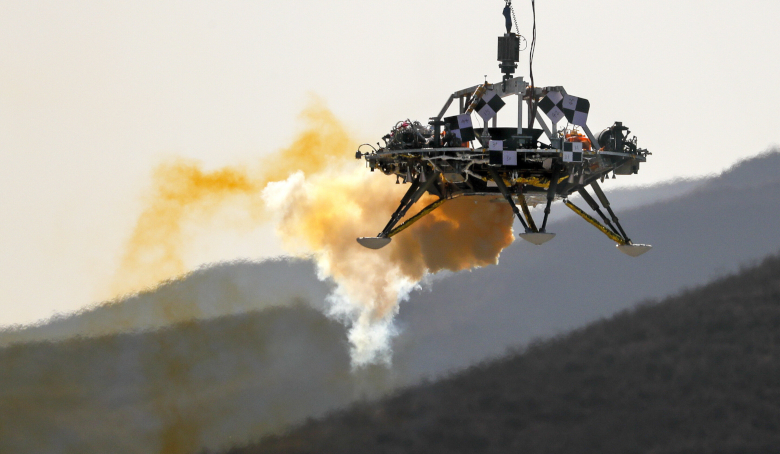Yesterday, in front of around of 70 guests from 19 countries, China showed off the capabilities of its Mars Lander, including hovering, obstacle avoidance and deceleration manoeuvres, in preparation for the country’s first interplanetary mission which it aims to launch next year.
The demonstration took place in Huailai, Hebei Province, Asia's largest extraterrestrial celestial landing test site, which allows engineers to simulate conditions on the red planet, where the pull of gravity is about one-third that of Earth.
China has now chosen two preliminary sites on Mars near Utopia Planitia and along with the lander, the country aims to unleash a 240 kilogram solar-powered rover to gather data on the arid and dusty martian surface.
Twice as massive as China’s two lunar rovers, the Mars rover will be equipped with a packed payload of instruments including a subsurface detection radar, a climate detector, and a Mars magnetic field observation station. It will also carry a multispectral camera to study the composition of the red planet’s surface material.
The overhead orbiter will be equally laden with equipment, including a Mars ion and neutral particle analyser, and energetic particles analyser, a mineralogy spectrometer and two cameras.
Its cameras, one for medium resolution and the other for high resolution, will be used once in orbit around Mars to image the preselected landing sites ahead of the rover making its way to the Martian surface.
"After the probe is launched, it will take about seven months to reach Mars, and the final procedure of landing will only last about seven minutes, which is the most difficult and the most risky part of the whole mission," said the Mars mission's chief designer, Zhang Rongqiao.
If China succeeds, it will be the only other nation along with the US to pull off such a feat. Many countries have tried over the years to land a craft on Mars, including Russia and Europe, but so far, none have made it with the exception of those launched by NASA.
The event at Huailai marked the first public appearance of China's Mars exploration mission, and was attended by a number of officials including Wu Yanhua, vice administrator of China National Space Administration and Zhang Kejian, the administrator of China National Space Administration.
During his welcome speech, Zhang said that the exploration for the vast cosmos is a shared dream for all mankind.
The meeting was also a chance for China to carry out space international exchanges and cooperation, which Zhang said the country has been doing for 60 years now.
To date, over 140 space cooperation protocols have been signed by China with 45 countries and international organisations, but ties with the US remain strained amidst national security concerns.
The US has banned most space cooperation with China and has even kept the nation from participating in the International Space Station (ISS).
China has though started constructing its own larger, more permanent space station and has invited applications from around the world to conduct experiments onboard when it is operational.











